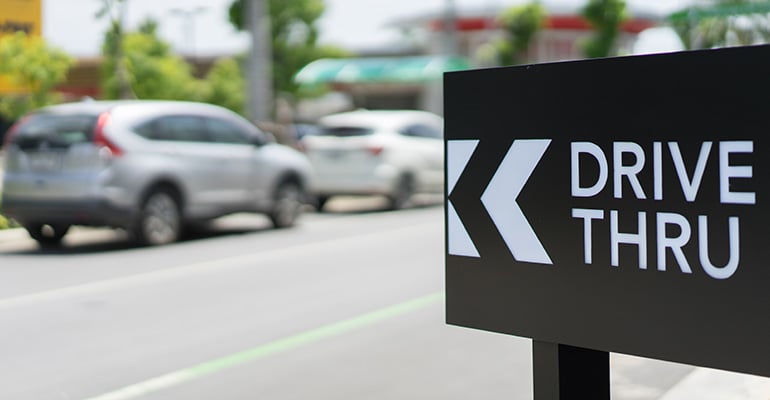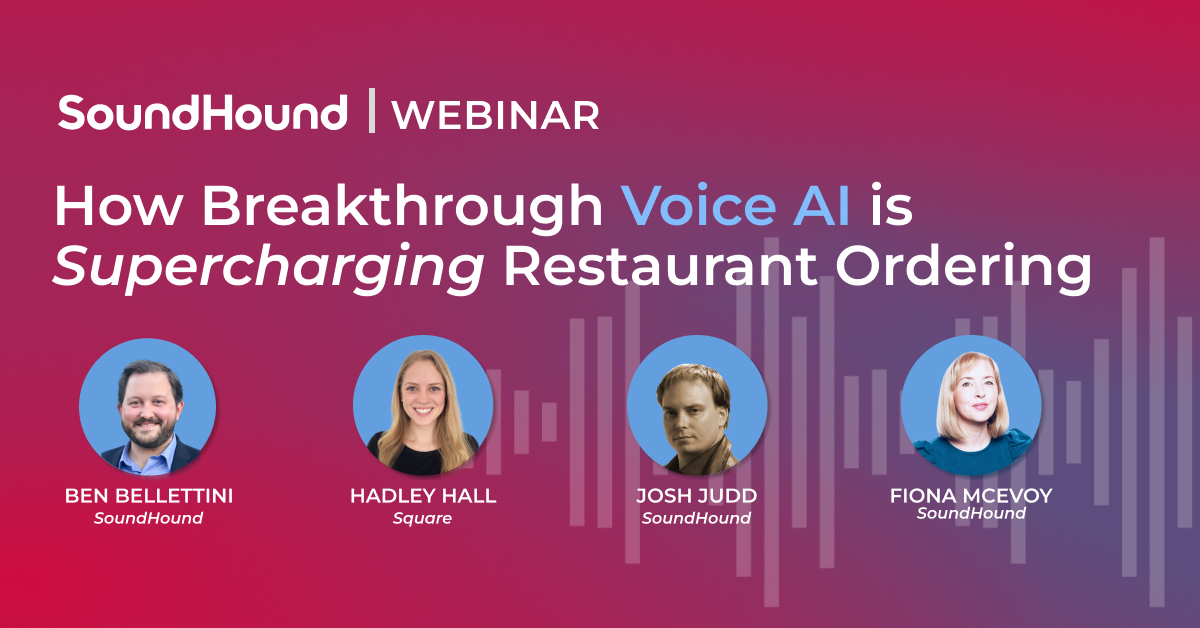How Conversational AI Improves Restaurant Customer Service


“We ask our merchant customers how many calls they miss each week, and they often don’t know. But once they look, it’s typically anywhere from 20 to 30% — and they’re shocked by how much potential revenue is being lost,” said Ben Bellettini, VP of Restaurant Sales at SoundHound, during a recent webinar, “How Breakthrough Voice AI is Supercharging Restaurant Ordering.“
Ben was joined by other executives at SoundHound and innovative payment processor, Square, to discuss how voice AI is helping restaurants respond to new challenges. Including helping to capture missed calls, increase check sizes by upselling, and speeding cars through drive-thru lanes.
You can listen to the recorded 60 minute webinar or keep reading to discover the highlights of the session:
Webinar: How Breakthrough Voice AI is Supercharging Restaurant Ordering
Ben Bellettini
VP of Restaurant Sales, SoundHound
Hadley Hall
Product Manager, Square
Josh Judd
Head of Solutions Architecture and Engineering, SoundHound
Fiona McEvoy
Corporate Communications, SoundHound
Hadley: They are looking for flexible solutions — things like voice AI, digital signage as well as QR ordering codes allow restaurants to pivot quickly, as their needs change.
We’re also seeing a lot of interest in reservation integrations and online ordering. What’s really important with all these technology solutions is the integrations. The better the technologies integrate, the less time restaurants spend doing manual work.
Ben: Many restaurants since Covid have had a critical need to lean into off-prem. Trying to figure out what delivery looks like. How do they facilitate pickup. And labor challenges. I read yesterday that “50% of restaurant employees have thought about turning in notice in the last 30 days.”
We’re seeing restaurants struggle on food costs, which is making razor-thin margins get even thinner. They’re looking at their menu and trying to figure out, can I raise costs without losing customers?
So the question is, how can restaurants get creative to deal with thinning margins?
“The question is, how do I get creative to deal with thinning margins? They’re looking at their menu and trying to figure out, can I raise costs without losing customers?”
There’s two areas where voice AI can really help.
One area is capturing missed calls which boosts revenue. At busy and frequently understaffed restaurants, a lot of times nobody is picking up the phone. We asked our merchants to look at their records, and they tell us: “Wow, I had no idea the amount of revenue that we were losing prior to installing voice AI.”
The 2nd is at drive-thrus: how can we process as many vehicles as possible so cars don’t back up. Or ensure they keep moving so those in the back of the line don’t feel frustrated and go somewhere else.
We help achieve that through very rapid recognition of voice using Natural Language Understanding. NLU understands speech in real-time and creates meaning even as the user is talking. We do it in one instance so there’s no back and forth, allowing us to greatly reduce the time placing an order.
Ben: Upselling is a key area, helping to increase check sizes. When restaurants rely on their employees to upsell – do you want a drink with that chicken sandwich or a side of fries? — and the employee is frantically dealing with a number of orders, it can be hard to remember to prompt an upsell. In fact, they may want to get off the phone quickly and get back to other things they were doing.
With our technology, it’s quite literally hardwired in. We have the capacity to make sure that we’re increasing check sizes. Our system doesn’t get frantic and it doesn’t get overwhelmed when the line gets long.
Josh: Until a couple of years ago, most voice AI systems were more likely to be the butt of jokes than they were to produce anything useful.
That really changed when SoundHound came out with its first voice AI product that included our award-winning natural language understanding (NLU) platform. What makes our restaurant platform great is that we applied it to restaurants.
We built a domain on top of our platform that has a lot of restaurant-specific knowledge. It knows how to process multiple languages simultaneously. If you think about an American restaurant that sells Mexican food, you’re going back and forth between Spanish and English constantly. So getting that right was hard.
“Our platform has restaurant-specific knowledge and can process multiple languages simultaneously.”
We’re also working on newer capabilities like eyeball tracking or knowing the customer’s order history. So if you know the customer always order a pepperoni pizza with mushrooms, the customer could say something simple like, “I’ll have my usual.”
And our system would know what that actually means.
Ben: Employee assist is an exciting use case. A lot of our merchants are asking for better task management software to assist associates as they are working. If you think about it, most QSR employees are walking around with a headset. Why not activate some sort of task management system to assist them, and help reduce training costs?
Imagine a situation where you have a new employee and they have no idea how to make the new special burger that you just introduced to the menu. How great would it be if you could just have that associate interact via their headset with a training module that guides them through how to actually make that burger?
The associate simply uses a wake word, “how do I make burger x,y,z,” and then our audio can help guide them through that process of how to make the new burger.
Hadley: We’re seeing a lot of restaurants lean into offerings like live cooking classes, retail sales, and we’re starting to see restaurants leverage social media to really create a buzz about the business. And taking advantage of that buzz to do live streaming, ticketed events, they’re leveraging different channels to create a larger customer base.
Josh: Our technology is inherently cloud-based. Once we’ve programmed a cloud-based ordering experience for a given restaurant, it stays programmed even if you want to add more channels.
So if we create your ordering experience for telephone orders initially, and then you say, hey, we want a kiosk, or a cell phone app, you don’t have to redo the voice AI layer. You only have to add a few layers of code to your app and now you’ve tied into all that work you already did for the voice ordering system over a telephone. So one aspect of efficiency is that we do it once and it stays done.
At SoundHound, we have all the tools and expertise needed to create custom voice assistants and a consistent brand voice.
Explore what’s possible in your restaurant at SoundHound for Restaurants. Want to learn more or request a demo? Talk to us about how we can help bring your voice strategy to life.